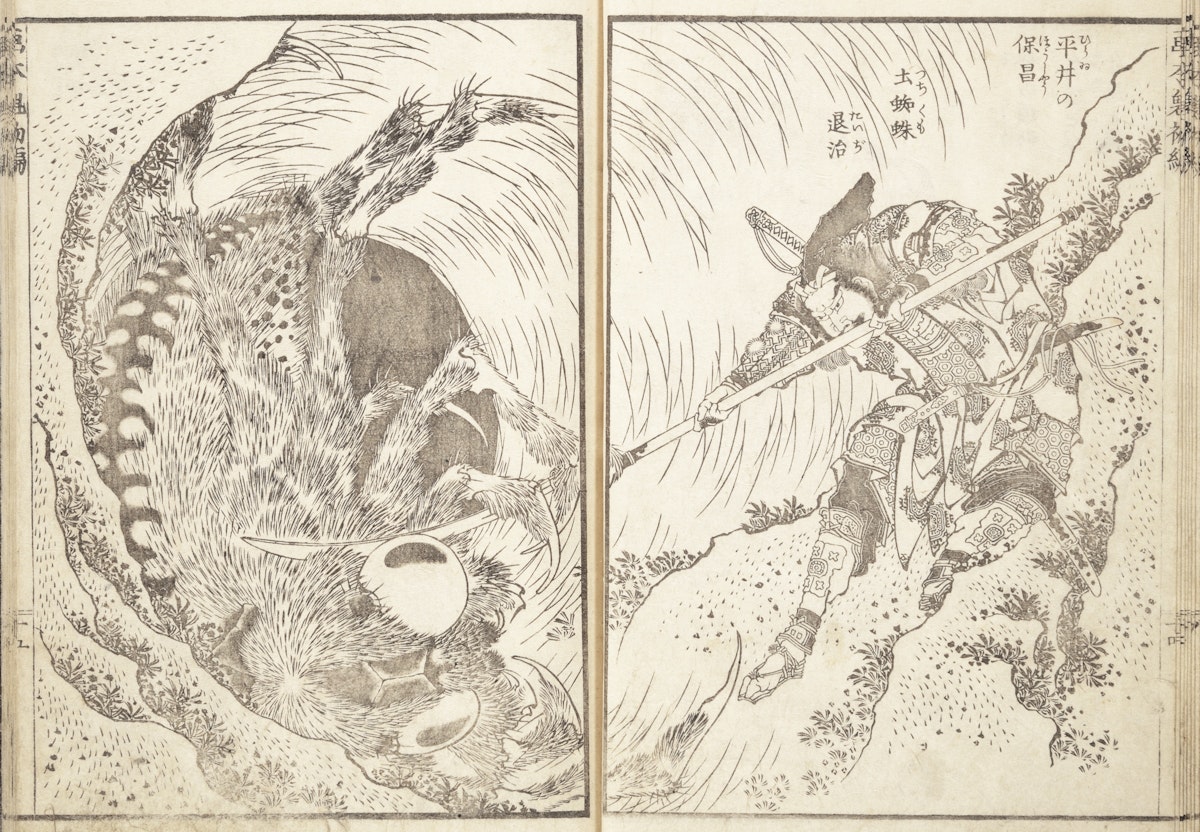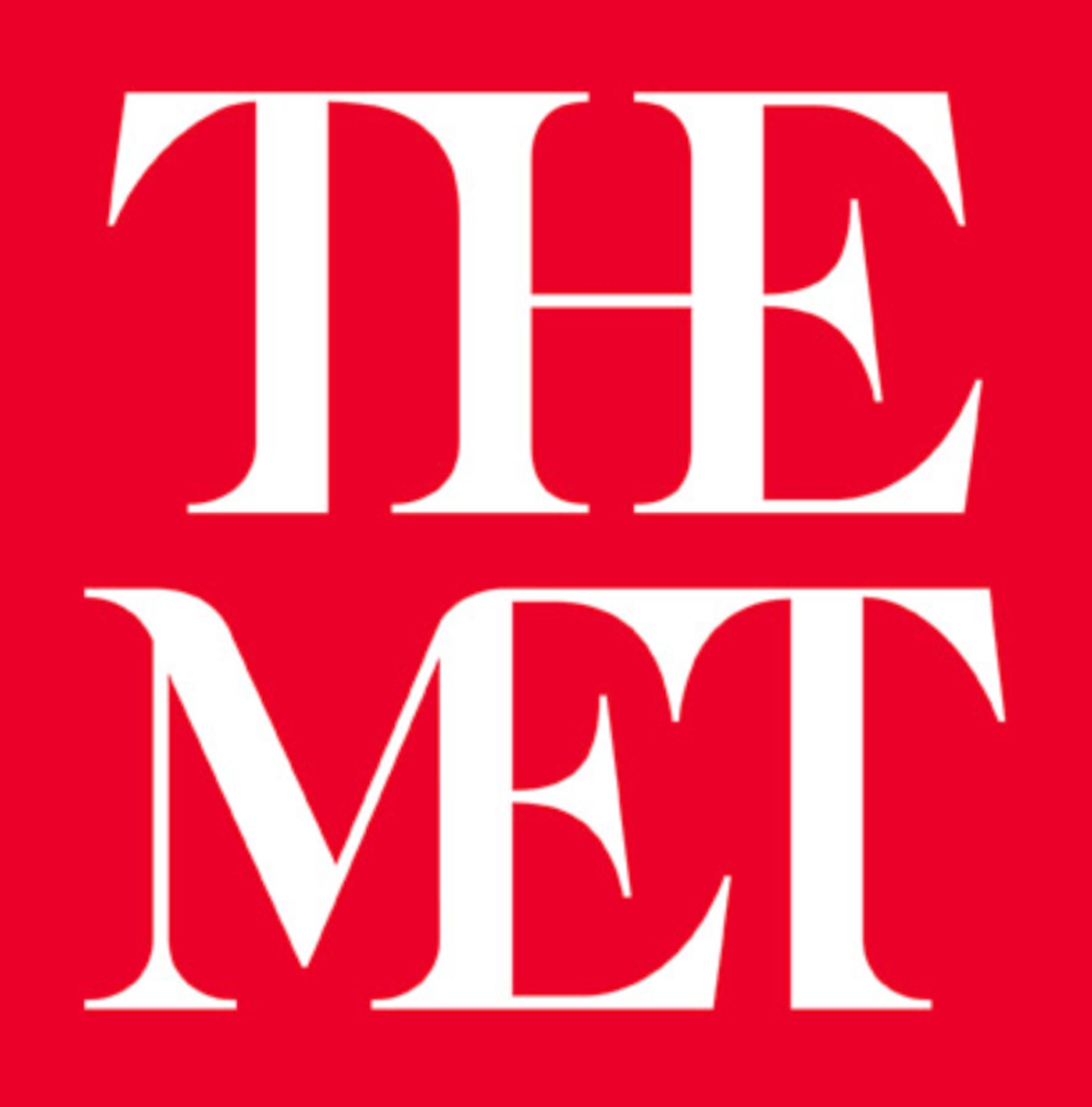
Hokusai’s Illustrated Warrior Vanguard of Japan and China (1836)
Until the age of seventy, nothing I drew was worthy of notice. At seventy-three years, I was somewhat able to fathom the growth of plants and trees, and the structure of birds, animals, insects and fish. —Katsushika Hokusai, One Hundred Views of Mt. Fuji, 1834
One year after this statement, seventy-six-year-old Hokusai drew a series of warrior images that included the figures above: Hirai Yasumasa (958–1036) subduing a monster spider, Tsuchigumo. Lines in the background trace the motion of the gigantic arachnid as it tumbles and its sickle-like legs flail in the air, emphasizing the movement and force in a way that resonates with the visual effects of modern manga. This image is dynamic; and yet it gives the impression of a perfectly paused still-frame — the monster’s eyes meeting our own — as the moment is immortalized.
This scene is part of a woodblock-printed book by Hokusai, titled Wakan ehon sakigake, which assembles images of famous Japanese and Chinese warriors, both historical and legendary. The Japanese term sakigake in the title signifies outstanding figures or leaders (Wakan means Japanese and Chinese, and ehon is a picture book). In the preface, Hokusai explains that the publisher Sūzanbō asked him to “fill three volumes with ‘wisdom’ [chi], ‘humanity’ [jin] and ‘bravery’ [yū], using examples of widely celebrated mighty heroes as reminders of military arts even in times of peace”. The second volume was published as Illustrated Stirrups of Musashi (Ehon Musashi abumi, 1836) and the third was advertised at the end of this sequel as Picture Book in the Katsushika-style (Ehon Katsushika-buri), but appears never to have been published. The block-ready drawings for the third, uncompleted volume were subsequently bound in a luxury album format that is now at the Met.
Following the passage quoted above from One Hundred Views of Mt. Fuji, Hokusai goes on to express his ultimate desire fully to master the art of the brush: “At one hundred and ten, every dot and every stroke will be as though alive”. Already in these images we witness that he was not too far from this achievement. No two dots or lines are the same. Each tiny leaf growing on the rocks and each textural mark on the ragged surface is animated, filling the picture with vibrating energy. Every single strand of hair is charged with life.
Such pictorial magic was the result of Hokusai’s masterful draughtsmanship and the skill of the highly accomplished woodblock cutters, Egawa Tomekichi and Sugita Kinsuke. We also witness the expertise of the printer who realized these sharp, well-articulated lines and the delicately-gradated texture of the monster spider. Egawa Tomekichi was designated personally by Hokusai as someone who could accurately transfer his brush lines onto woodblocks for printing.
The Hokusai scholar Nagata Seiji has pointed out that the time of this book’s production coincided with the most challenging period in the artist’s life. Made in the middle of the Tenpō era’s (1830–44) great famine, the images were produced while Hokusai was in the midst of financial difficulties due to family troubles. He left the capital city of Edo for a period and even used an assumed name. In one of his letters during this time, Hokusai wrote that improving his drawing and painting skills was the only pleasure that remained to him. These vigorous images of military tales do not hint at any physical decline due to his advanced age, nor emotional exhaustion from the personal hardships and poverty he experienced.
When he was seventy-five years old, Hokusai started to use another art name “Gakyō rōjin”, which can be translated as “old man crazy to paint”, combined with “Manji” (卍; the reverse swastika), an auspicious symbol used in Buddhism. These names help convey his never-ending ambition to master the arts of drawing and painting. It is with this burning ardor that Hokusai tackled his project of the late great warrior books.






